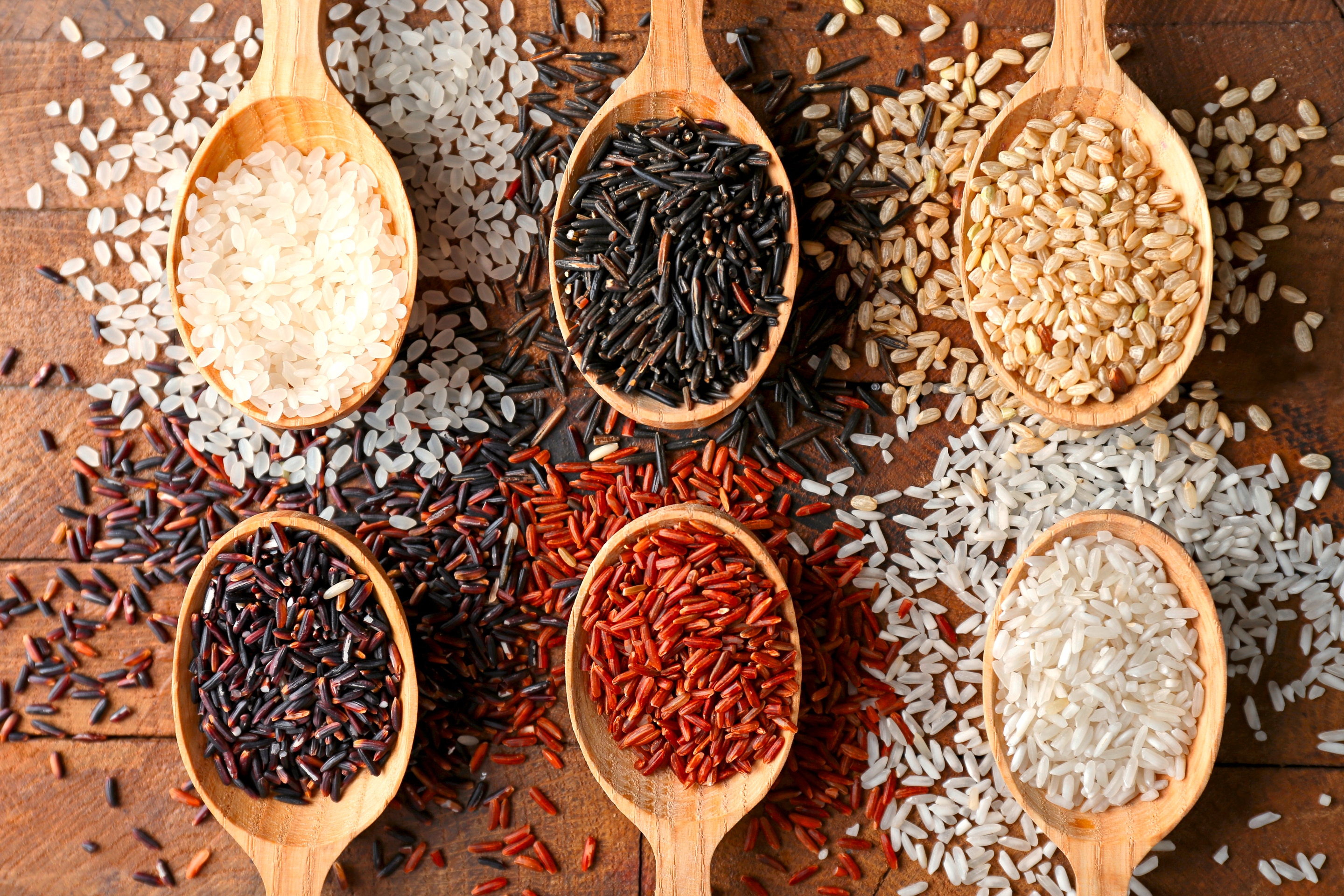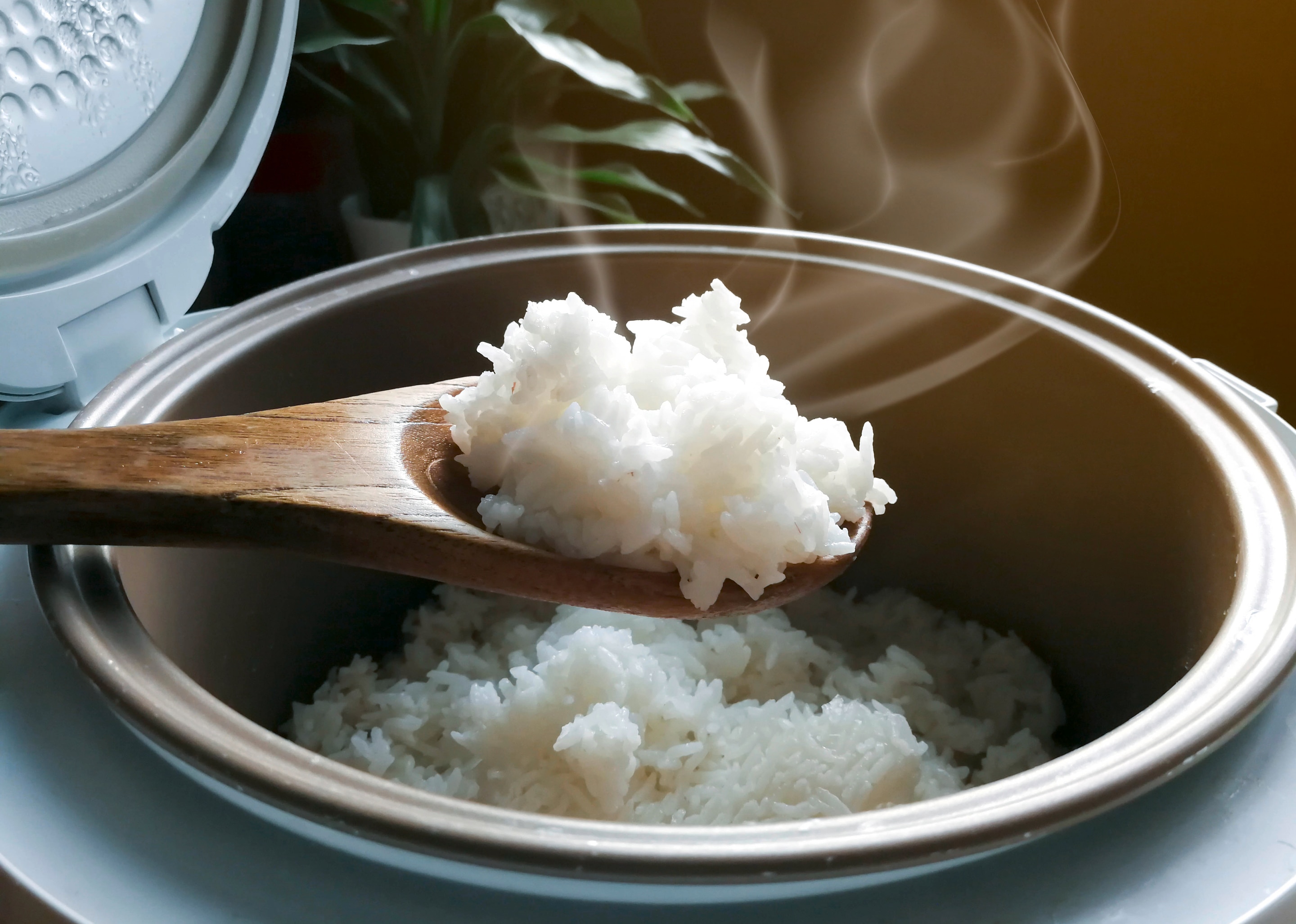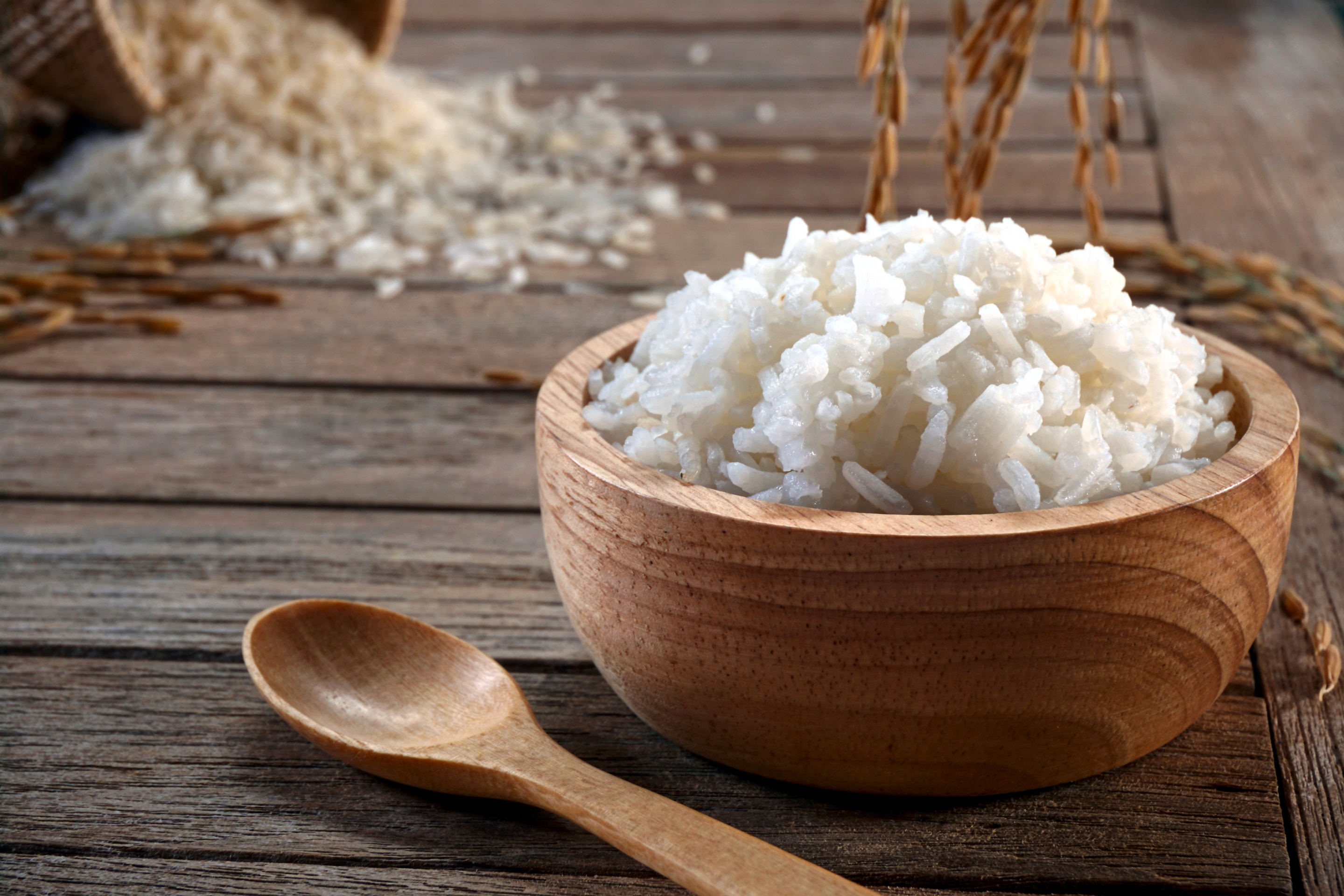Skip to:
These steps in cooking rice thoroughly and you will have a bowl of light and fluffy rice
Filipinos are diverse, but there’s one thing that unites us all: we love rice. It’s an inexpensive ingredient that can be found in most Asian households. This high-carb grain completes every meal — a very versatile ingredient that can be served as an appetizer, main course, and even dessert. However, cooking rice can be a hit or miss with some attempts resulting in gummy, clumpy, undercooked, or burnt rice. In order to find that sweet spot, you need to find the most time-efficient steps in cooking rice that guarantees the same hot, fluffy rice every time.
It can be intimidating to cook rice, especially when you have to cook it in bulk. Following the right steps in cooking rice can help you be more frugal and less wasteful. Most importantly, you can be more inspired to whip up different rice dishes, using different types of grains.
Choosing The Right Rice

Purchasing rice should not feel overwhelming as long as you know what to do with it
Long-grain, medium-grain, or short-grain? That is the question. When choosing the right rice, it simply narrows down to what you’re planning to whip up in the kitchen.
These three main types of rice are measured based on length and have different textures when cooked. Examples of the long-grain variety are basmati and the infamous jasmine rice. They are both low in starch, fluffy when cooked. While we are familiar with the latter, the former is popularly used for Biryani. You can also use long-grain rice for pilaf or as stuffing. If you’re feeling experimental, transport yourself to another country by using it to make Tachin or Mujadara.
Medium-grain varieties range from japonica rice, arborio (which is commonly mistaken as short-grain rice), to brown and black rice. Different from long-grain rice, medium-grain rice has a somewhat chewy, moist texture. They are used for dishes such as Risotto, Paella, and soupswhere its starch content comes in handy to add more thickness.
Last but not least, short-grain rice is commonly used for sushi and pudding. When cooked, this type of rice appears sticky due to the starch.
Easy Steps in Cooking Rice

Fluffy, hot rice is what everyone strives for
Once you have decided the type of rice you want to cook, let's begin the steps on how to cook rice. Take the time to prepare the rice grains — you definitely don’t want to bite into a tiny rock. Whether you’re using a pot or rice cooker, we have prepared the simplest steps in cooking rice that every home cook can follow.
Rinse and repeat
Rinsing is important because it not only cleanses the rice from bugs, debris, dust, and chemicals, but also acts as a way of removing excess starch. As you swoosh your rice in a large bowl, you’ll see the water become cloudy. This is the starch on the rice kernels’ surface. Use a sieve to strain the rice and repeat until the water appears relatively clear. Getting rid of the starch is integral if you’re aiming for a fluffy finish. Failing to do so will cause the rice to be gummy and exceedingly sticky.
Keep an eye on the ratio
Knowing the ratio between rice and water is another essential detail as you go through the steps in cooking rice. Different sized pots affect the absorption of water. However, all you need to remember when cooking short-grain white rice is using 1 cup of rice to 1 cup of water.
When using long-grain white rice, the ratio would be 1 cup of rice to 1¼ cup of water. The rice should cook nicely while covered with a lid for around 18 minutes, undisturbed. If you’re using a rice cooker, you’ll be informed when your rice is ready.
Let it rest
The final trick when cooking rice is the resting period. As hungry as you and your loved ones may be, fluffy goodness will undoubtedly be served if you decide to follow this step. Rather than transferring your rice from the pot or rice cooker directly to a plate, take it off the heat, place a towel over the pot, cover it (once again) with the lid, and let it sit for 10-15 minutes. This allows the towel to absorb any excess moisture, creating evenly cooked rice.
The Leftovers
If you’ve made too much rice, think of it as a blessing rather than a problem. There are numerous ways to use what’s left.
The way of storing your rice depends on when you’d like to cook it next. You have the option of transferring it into an airtight container and placing it in the fridge if you have plans to cook it within the next day or two. However, the longer it sits in the fridge, the more likely bacteria will spread. The other alternative is to place it in a freezer bag and pop it in the freezer. Keeping it flat will create more space while making it easier to defrost when needed.
With extra rice at your disposal, the possibilities are countless from adding it to a stew, Arroz Caldo for sick days, integrating it with other ingredients to make a dessert, or throwing it in a pan with pork kasim, vinegar, Knorr Liquid Seasoning, garlic cloves and all to create a delicious Pork Adobo.
The opportunities that come with this versatile staple make it easy on the bank and the prep. It’s no wonder many look to rice as a main component in their meals. After following these steps in cooking rice with success, take a look at our other rice recipes for more ways to incorporate the grain and produce tasty bites from the confines of your own home.

